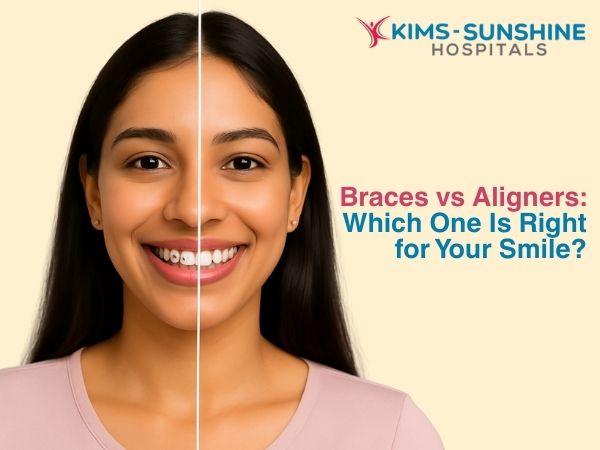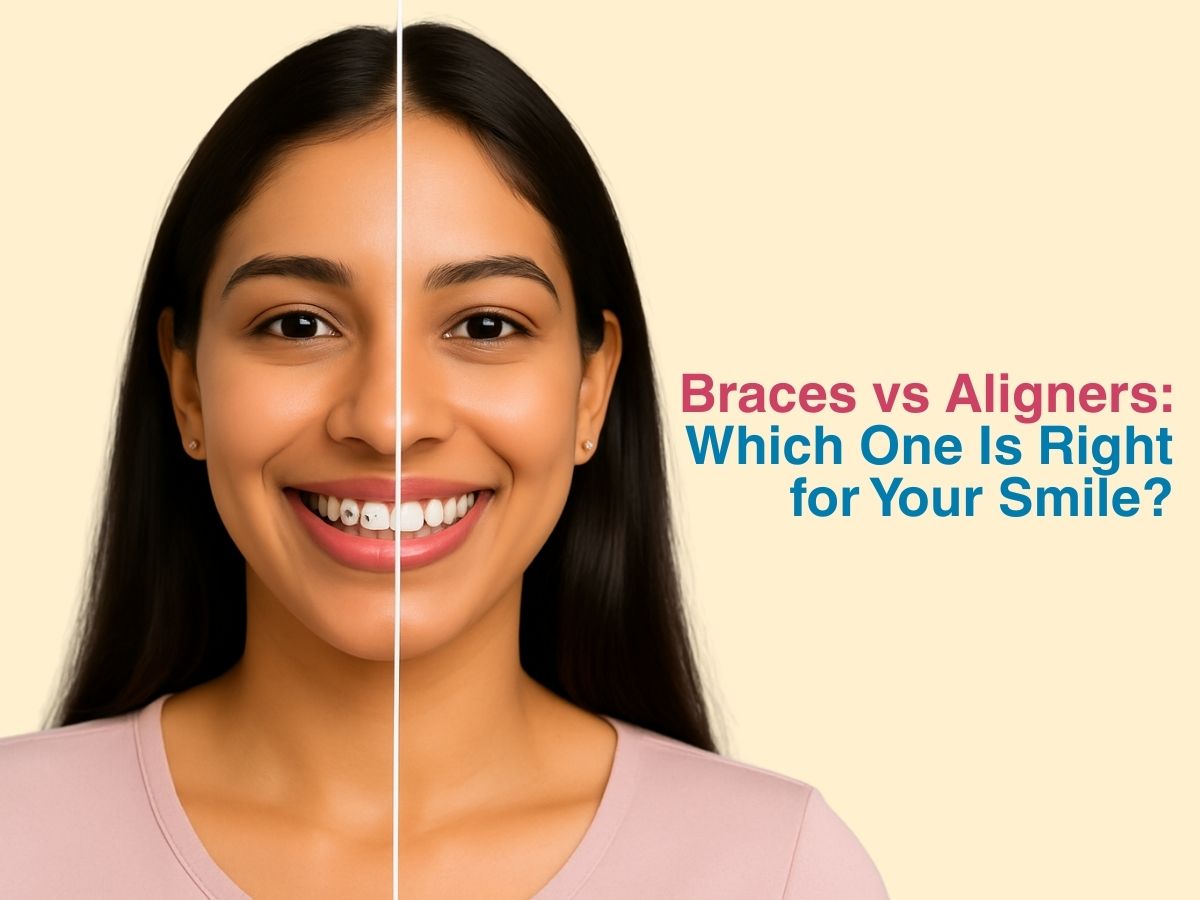
Braces vs Aligners: Which One Is Right for Your Smile?
Introduction- Difference Between Braces And Aligners For Teeth Straightening
Braces are old-school architects. They work like patient builders, fixing tiny metal anchors onto each tooth and connecting them with tensioned wires. Bit by bit, they reshape your bite, brick by brick, week by week. They’ve earned their reputation through decades of tackling the most stubborn, hard-to-move smiles.
Aligners, in contrast, are stealthy engineers. Clear plastic trays, moulded precisely to your bite, designed to be worn in sequence. They’re transparent, removable and come with a tech-first approach that maps your smile journey even before the first tray slips in.
Are Aligners As Effective As Traditional Metal Braces?
Effectiveness depends on the terrain. Braces are battle-hardened veterans. They tackle everything from crossbites to crowding, impacted canines to rotated molars.
Aligners, while newer to the field, aren’t just vanity tools. With 3D scanning, CAD-driven simulations and flexible polymers like Zendura or SmartTrack, they can handle a wide range of orthodontic concerns. Mild spacing, overjets, underbites and relapse cases after braces – aligners take all of these in their stride. But when the going gets gnarly with jaw discrepancies, complex root rotations and vertical tooth movement, braces still hold the upper hand. They offer more mechanical leverage, more anchorage and more force modulation.
In summary:
- Aligners shine in cases that require finesse.
- Braces dominate when brute force and intricate control are needed.
It’s not a matter of “better” but of the right tool for the job. It is like choosing between a scalpel or a hammer and you wouldn’t want to fix a chandelier with either unless you knew what you were doing.
Cost Comparison Between Braces And Aligners In India
Let’s talk brass tacks. Orthodontic treatment is an investment, not just in looks but in long-term dental stability. But it does come with a price tag and in India, those digits vary.
Braces-
- Metal braces: ₹30,000 to ₹55,000
- Ceramic braces: ₹50,000 to ₹85,000
- Lingual braces: ₹75,000 to ₹1,50,000
Aligners-
- Clear aligners (Invisalign, Toothsi, Illusion Aligners, etc.): ₹60,000 to ₹2,50,000
Braces tend to be cheaper upfront, especially metal variants. But they require regular follow-ups, emergency visits (loose brackets, snapped wires) and sometimes longer treatment times.
Aligners come with higher initial costs, but fewer chairside adjustments. Many clinics offer virtual check-ins and pre-planned tray series, which cut down on clinic time. Also, Indian brands have brought pricing down significantly, making them more accessible these days.
The final cost often includes:
- X-rays and 3D scans
- Treatment planning
- Device fabrication
- Follow-ups and retainers
Think of braces as the train ticket: reliable, straightforward and affordable. Aligners are like a flight: faster, comfier and a little pricier, but definitely not unreachable.
Pros And Cons Of Braces Vs Aligners
Let’s break it down. No sugar-coating. Every smile journey has its trade-offs.
Braces – Pros
- Excellent for complex or severe misalignment
- Zero chance of “forgetting to wear” them
- Typically more affordable
- Broad availability even in small towns
Braces – Cons
- Highly visible, especially metal types
- Food restrictions (no popcorn, sticky sweets, or hard snacks)
- Oral hygiene is tougher as food loves to hide in brackets
- Discomfort from poking wires or cuts from metal edges
Aligners – Pros
- Transparent and nearly invisible
- Removable during meals and brushing
- No food restrictions
- More comfortable with minimal irritation
Aligners – Cons
- Must be worn 20-22 hours a day without fail
- Easy to misplace or forget
- Not ideal for very complex cases
- May require attachment buttons, which reduce invisibility slightly
Conclusion
Braces bring old-school grit. Precision, structure, and deep reliability. Aligners, meanwhile, move with the times: subtle, streamlined and quietly efficient. There’s no one-size-fits-all. The decision rests on what you value: visibility, convenience, cost, or complexity and it begins not with trend-chasing, but with self-awareness. So, take a pause and speak with your orthodontist. Get the full picture because your smile isn’t just about aesthetics, it’s a map of your choices and we know that every map deserves the right compass.







